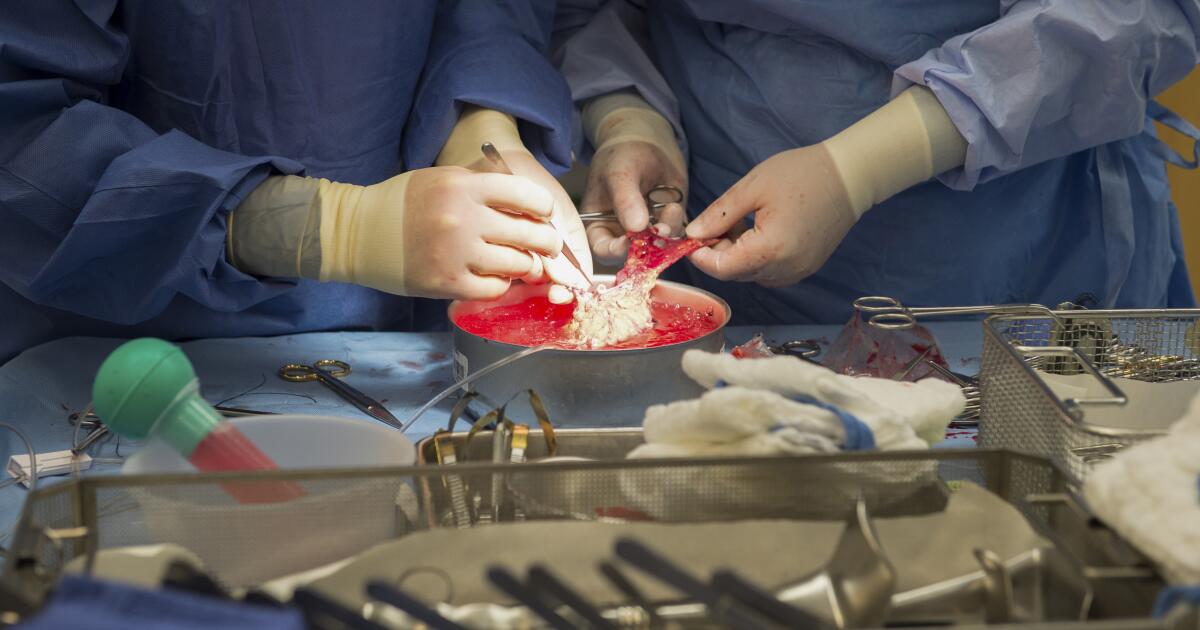People who voluntarily donate a kidney face a lower risk of death from the operation than doctors have long expected, a team of researchers announced Wednesday.
For 30 years, the study tracked living kidney donations and found that by 2022, less than 1 in 10,000 donors had died within three months of surgery. Transplant centers have been using older data citing a risk of death of 3 per 10,000 living donors when counseling donors about life-threatening surgical complications.
“Over the past decade, the operating room has become significantly safer for living donors,” said Dr. Dorry Segev, a transplant surgeon at NYU Langone Health Medical Center and co-author of the study. was published in the journal JAMA.
This is largely made possible by newer surgical techniques, Segev said, calling for guidelines to be updated to reflect these improvements in safety and perhaps increased interest in living donation.
Transplant recipients are often more concerned about the potential risks to their donors than the donors themselves.
“It’s even more reassuring for them to let their friends or family donate,” Segev said.
Thousands of people die every year waiting for an organ transplant. Living donors can donate one of their two kidneys or part of their liver, the only organ that regenerates.
With nearly 90,000 people on the waiting list to receive a kidney transplant in the United States, finding a living donor not only shortens the waiting years, but these organs often live longer than those from deceased donors.
However, last year, only 6,290 of more than 27,000 kidney transplants in the United States came from living donors, the lowest number since the pandemic. But security is not the only barrier to living donation. There is also awareness, as many patients are reluctant to ask about this option and although the recipient’s health insurance covers the costs, some donors have to face costs such as travel or lost wages during the recovery period.
The NYU team analyzed US records of more than 164,000 living kidney donations from 1993 to 2022 and found 36 post-surgery deaths. Men and those with a history of high blood pressure were the highest risk donors.
Only five of those deaths have occurred since 2013. That period coincided with US transplant centers moving to less invasive kidney removal, as well as adopting a better at stopping renal artery bleeding, Segev said.
“It’s a safe operation that has become even safer over time,” something important for donors to know, said Dr. Amit Tevar of the University of Pittsburgh Medical Center, who was not involved in the study.
But long-term risks must also be taken into account, he stressed, including whether the donor’s remaining kidney is expected to last the rest of his life.
The risk of a donor later developing kidney failure is also small and depends on factors such as obesity, high blood pressure, smoking, and a family history of kidney disease. By measuring risk, doctors determine the likelihood that a donor will have problems later, and transplant centers may have slightly different eligibility criteria.
“There is no such thing as a moderate or high-risk donor: either you’re a match or you’re not,” Tevar said of the decision to accept or reject a potential donor.
Before that, doctors considered young adults to be suitable living donors. But Segev says older living donors are now preferred because it is easier to predict with certainty that they will not survive the remaining kidney.
If a living donor later suffers from kidney failure, they will have priority for a transplant.
___
The Associated Press Health and Science Department is supported by the Howard Hughes Medical Institute’s Scientific and Educational Media Group. The AP is solely responsible for all content.
2024-09-01 09:30:26
#Donating #kidney #safer #previously #thought #study #shows
